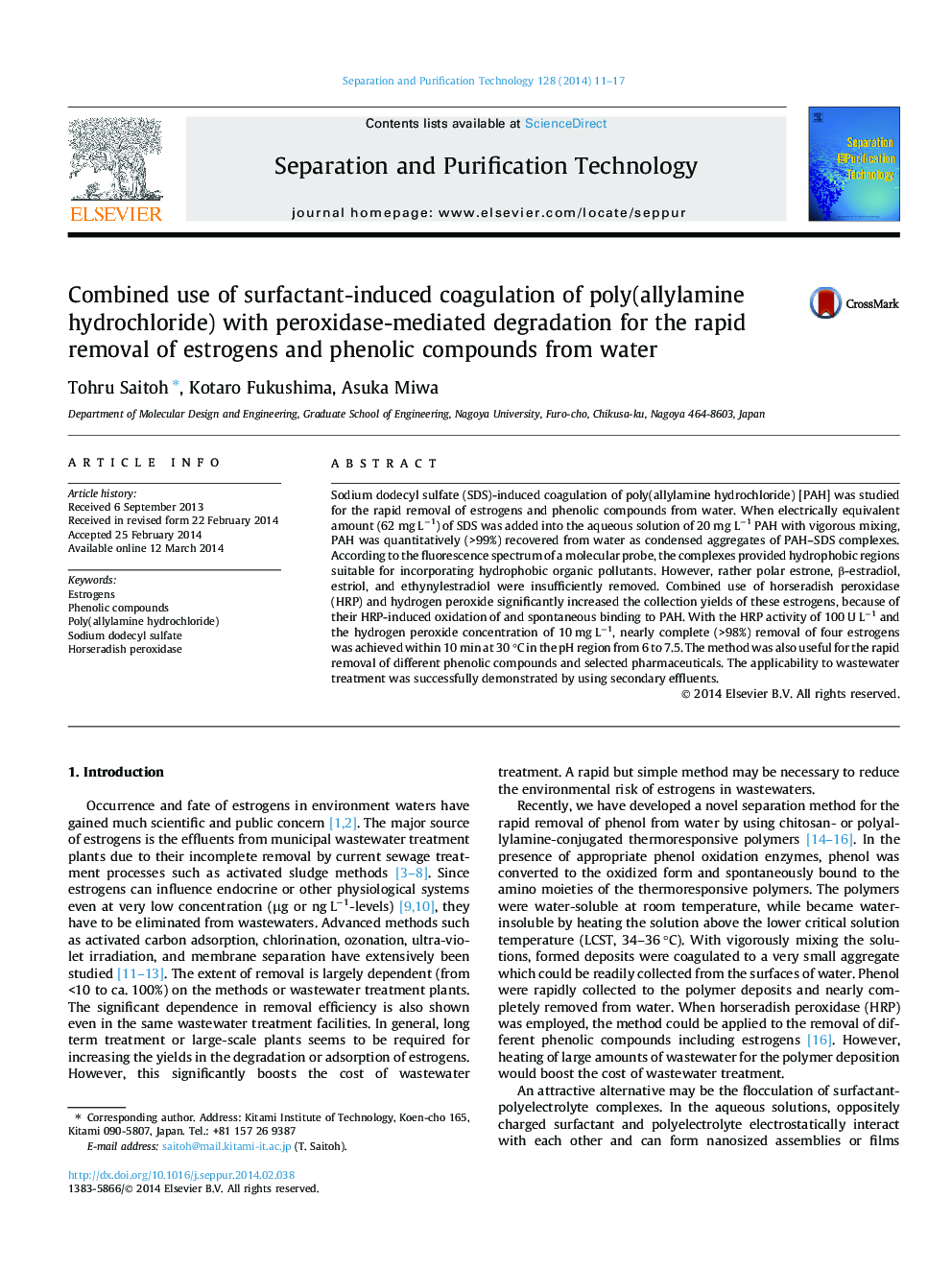| Article ID | Journal | Published Year | Pages | File Type |
|---|---|---|---|---|
| 641178 | Separation and Purification Technology | 2014 | 7 Pages |
•Coagulation system of poly(allylamine hydrochloride) and sodium dodecyl sulfate was designed.•Formed aggregates provided hydrophobic regions for collecting hydrophobic organic pollutants.•Combined use of horseradish peroxidase allowed nearly complete collection of estrogens.•Rapid removal of estrogens and phenolic compounds from wastewaters was achieved.
Sodium dodecyl sulfate (SDS)-induced coagulation of poly(allylamine hydrochloride) [PAH] was studied for the rapid removal of estrogens and phenolic compounds from water. When electrically equivalent amount (62 mg L−1) of SDS was added into the aqueous solution of 20 mg L−1 PAH with vigorous mixing, PAH was quantitatively (>99%) recovered from water as condensed aggregates of PAH–SDS complexes. According to the fluorescence spectrum of a molecular probe, the complexes provided hydrophobic regions suitable for incorporating hydrophobic organic pollutants. However, rather polar estrone, β-estradiol, estriol, and ethynylestradiol were insufficiently removed. Combined use of horseradish peroxidase (HRP) and hydrogen peroxide significantly increased the collection yields of these estrogens, because of their HRP-induced oxidation of and spontaneous binding to PAH. With the HRP activity of 100 U L−1 and the hydrogen peroxide concentration of 10 mg L−1, nearly complete (>98%) removal of four estrogens was achieved within 10 min at 30 °C in the pH region from 6 to 7.5. The method was also useful for the rapid removal of different phenolic compounds and selected pharmaceuticals. The applicability to wastewater treatment was successfully demonstrated by using secondary effluents.
Graphical abstractFigure optionsDownload full-size imageDownload as PowerPoint slide
